The Lost Secrets of Chandraketugarh
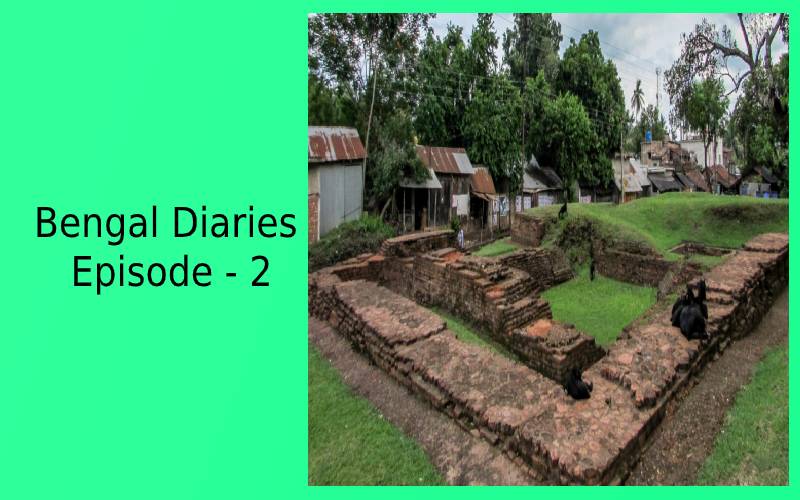
About 50 kms north-east of Calcutta, in the district of North 24 Parganas, lies a tiny village called Berachampa. The place is unremarkable, like any other small village. But within it hides a great mystery of history that still continues to confound historians to this day – this is the tale of that lost piece of history, the forgotten capital of the mythical Moon King.
The year was 1907. A local doctor by the name of Tarak Nath Ghosh noticed that while digging canals etc. for farming, what appeared to ancient seals, plaques, shards of pottery were regularly unearthed in the area. The diggings also revealed beds of what appeared to be canals dug in the ancient past. He wrote to the Archaeological Survey of India (ASI) in Calcutta of his discovery, urging the organization to carry out excavations in the area which he believed could reveal something important. After a few letters from the persistent Ghosh, A H Longhurst, the Chief of the ASI’s Eastern Circle, visited the spot for an inspection but tabled a report on his return that he didn’t find anything of significance worth further exploration.
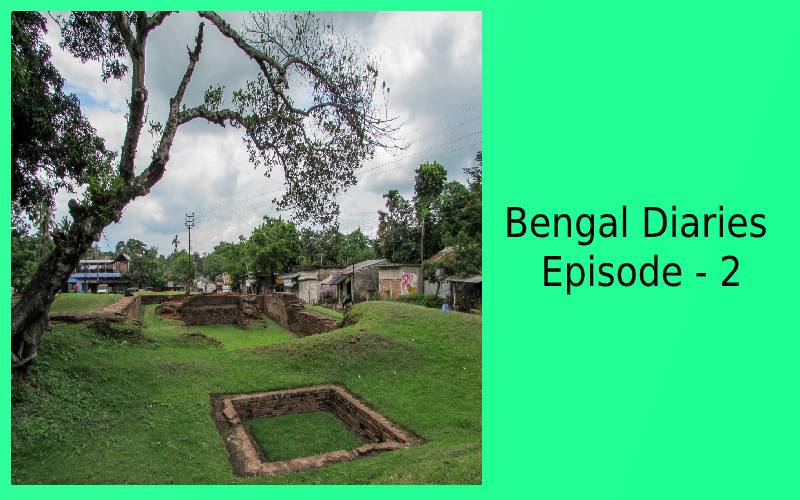
Things remained like that for another couple of years when Rakhal Das Banerji, the man who would go onto find the ruins of Mohenjo-Daro visited the spot and carried out his investigations with a little more interest than Longhurst had. Banerji concurred with the Englishman that no significant archaeological remains were present at the site – however, he discovered large volumes of terracotta artifacts here. It suggested to Banerji that the fortification, locally known as Chandraketugarh (Garh = vernacular for fort) represented a historical location.
Although Banerji didn’t manage to return to the site, an article written by him about his findings was published in Bengali daily Basumati in 1920 which brought attention to the site of Chandraketugarh. The first serious excavations at Chandraketugarh were not carried out till 1955/56 and spanned for over a decade. It revealed presence of items and artifacts from as many as 6 different time periods. The oldest went back to as far as 4th century BCE and the latest ones pertained to the post-Gupta period till the Pala-Sena period (11th/12th CE). The discovery of the ruins of a temple complex – with columns, pavilions, torans (gates), vedikas (small enclosures around trees) etc. presented some of the earliest known remains of Indian architecture.
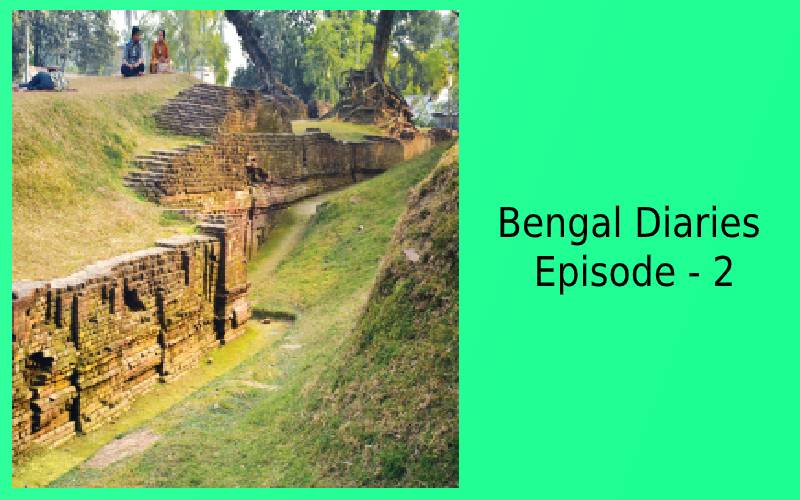
But what was the real identity of this place? To find out, we need to go back to writings of ancient Greek historians who wrote of the great Eastern kingdom of Gangaridae (Gangahriday) on the far side of the Ganges. Many historians feel that the capital of the mighty Gangaridae referred to by Greek writers was located at the site known as Chandraketugarh. The local mythology talks of a great Moon king – Chandraketu (Chandra is the vernacular for moon) who once ruled over this place during its heydays. Unfortunately, there is no literature reference to King Chandraketu. However, the writings of Greek travelers like Ptolemy refer a great Indian king called Sandrocottus. It was so long believed that Sandrocottus was the Greek reference to the great Chandragupta Maurya. However, some later day historians argue that Sandrocottus was more likely Chandraketu, from whom the remains of the ancient fortress in Barachampa take its name.
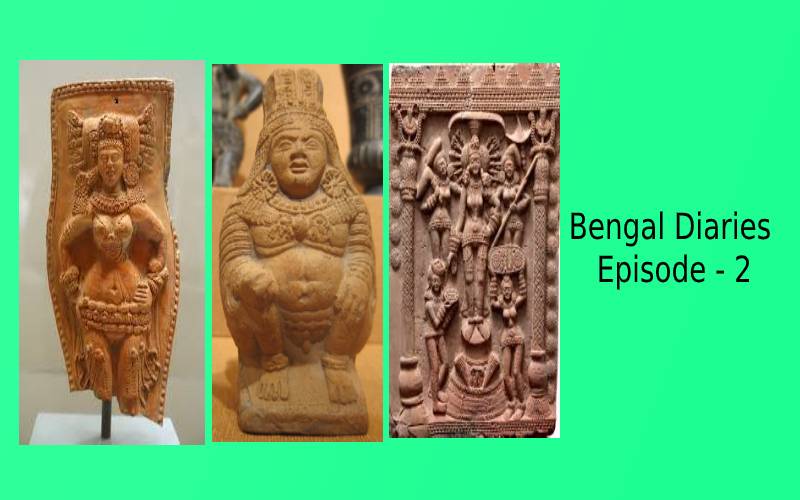
There is one more interesting yet intriguing element to Chandraketugarh. It is a mound locally known as Khana-Mihir er Dhipi (the mound of Khana and Mihira). Bengali folklore is full of references to Khana (aka Leelavati), a woman with exceptional talent in mathematics and astronomy. She was married to Mihira, the son of the legendary astronomer and mathematician Varaha (according to some versions called Varahamihira). However, in time, Khana’s talents happened to outshone that of her illustrious father-in-law who out of jealousy ordered Khana’s tongue to be cut off. The mound, in ruins stands as a testimony to this mythical woman whose historical existence has proven difficult to establish.
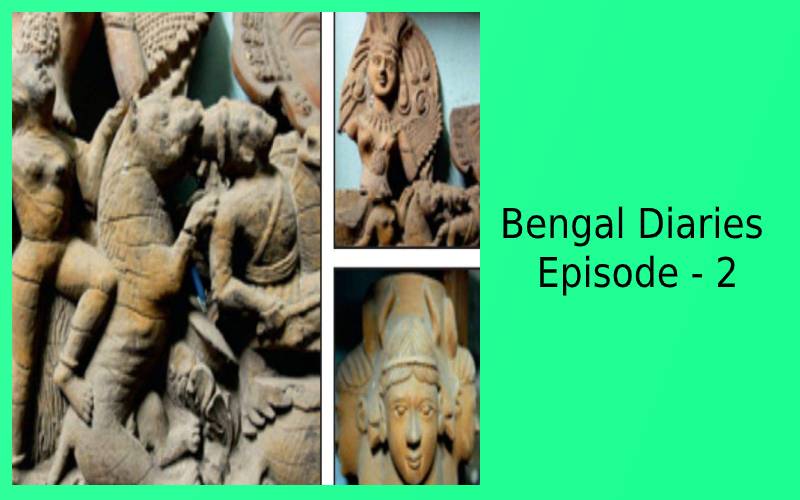
Chandraketugarh is one of the biggest tragedies of Indian history. Despite representing a long and rich slice of our history, it has remained largely in neglect for close to half century. ASI started another excavation in 2000 but that also stopped mid-way. And even sadder is the fact that while the place remains in neglect, ancient coins, artifacts and such stuff from here has been stolen and pilfered and even today is auctioned and traded all over the world for astronomical amounts. Some of the objects unearthed from Chandraketugarh adorn museums around the world like Musée Guimet in Paris, Linden Museum and the Museum of Indian Art, both in Germany, the Ashmolean Museum in the United Kingdom and probably also the Victoria & Albert Museum and the British Museum. Big auction houses like Sotheby’s and Christie’s have been known to auction objects and artifacts from Chandraketugarh, indicating the operation of prominent smuggling rings that have ensured that priceless stuff have moved into private hands – a crime of the highest order.
Once, a great river, probably represented in today’s Bidyadhari, flowed through this region, on the bank of which came up this mighty fort city of a great king that prospered for several centuries. However, vagaries of nature, mostly the shifting of the river bed led to this great city falling to ruins and gradually vanishing from the pages of history. Presence of variety of coins from different time periods suggests that Chandraketugarh had trade relations with faraway places like Southeast Asia, Ceylon and even ancient Greece and Rome. But in some more years, probably nothing will remain of this ancient city. It will be sad day for India’s heritage.
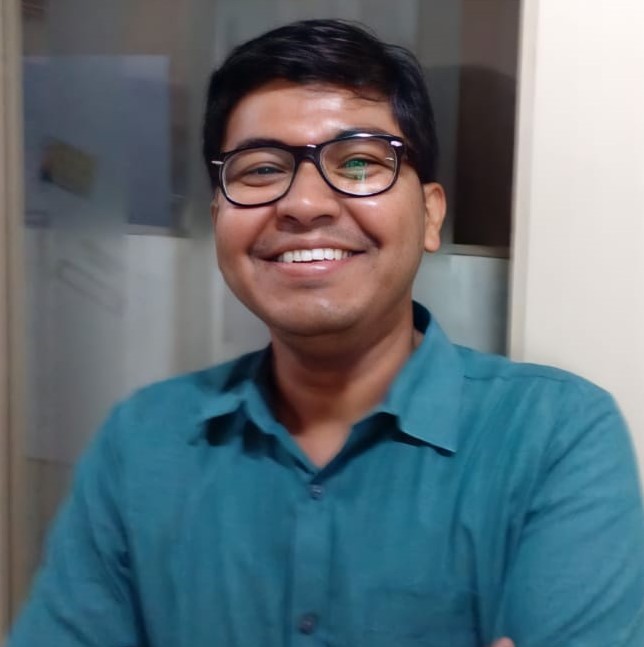
Based out of Kolkata, Trinanjan is a market researcher by profession with a keen interest in Indian history. Of particular interest to him is the history of Kolkata and the Bengal region. He loves to write about his passion on his blog and also on social media handles.
References:
1. https://www.livehistoryindia.com/amazing-india/2019/07/15/chandraketugarh-an-enigma-in-bengal
2. https://www.sahapedia.org/chandraketugarh-neglected-heritage-of-bengal
3. https://indianexpress.com/article/lifestyle/destination-of-the-week/the-city-that-never-was-4531886/
NEXT ARTICLE

At the southernmost tip of this mesmerising ensemble lies the majestic Great Nicobar Island, boasting an impressive landmass of about 910 square kilom...

Bharath has always been a land traversed by spiritual masters/ Guru since time immemorial. These spiritual masters have always upheld the core princip...

South India contains its fair share of unique pilgrimage centres. These divine places of worship have a prominent Sthala Purana, devoted followers, di...